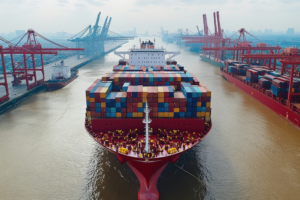In today’s increasingly complex and fast-moving global economy, supply chain optimization is no longer optional—it’s essential. With rising customer expectations, labour shortages, geopolitical disruptions, and evolving demand patterns, companies must find smarter ways to stay agile and efficient. This is where Artificial Intelligence (AI) and automation are making a transformative impact.
AI is rapidly changing how supply chains operate. From forecasting demand and managing inventory to routing shipments and mitigating risks, AI empowers companies to make data-driven decisions in real time. Traditional supply chains often rely on historical data and manual processes, which are slow to adapt and vulnerable to human error. AI, on the other hand, can continuously analyse massive volumes of real-time data and deliver accurate insights that drive proactive decision-making.
One of the most powerful applications of AI in supply chain optimization is predictive analytics. AI can forecast customer demand, detect buying trends, and recommend adjustments to inventory levels or supplier sourcing. This ensures that businesses maintain the right stock levels—avoiding both overstocking and stockouts—while improving customer satisfaction and reducing operational costs. For instance, if a sudden surge in demand is detected, AI can automatically alert procurement systems to respond quickly.

Automation complements AI by reducing manual workload and accelerating routine processes. Automated order processing, robotic picking systems, and AI-powered chatbots are just a few examples of how automation streamlines supply chain operations. By handling repetitive tasks, automation allows human teams to focus on higher-level planning and problem-solving.
Moreover, AI enhances risk management by identifying potential disruptions before they impact the supply chain. For example, AI systems can track weather reports, news alerts, and supplier performance data to flag risks—like political instability in a supplier’s region or a pending labour strike at a shipping port. This foresight gives companies the lead time needed to adjust sourcing strategies or reroute shipments, maintaining continuity and reducing losses.
Another critical benefit is end-to-end visibility. AI-powered dashboards provide real-time insights across the entire supply chain, from raw materials to final delivery. This transparency allows stakeholders to monitor progress, optimize routes, and address bottlenecks immediately.
Conclusion
As AI and automation technologies continue to evolve, their role in supply chain optimization will only become more vital. They not only improve efficiency and accuracy but also provide the agility and resilience needed to thrive in uncertain times. Businesses that embrace these tools today are positioning themselves to lead tomorrow.
At Grydd we harness the power of AI to transform your logistics operations. From predictive analytics to real-time tracking and process automation. Grydd offers cutting-edge solutions to help you stay ahead in an increasingly digital and connected world.
Discover what Grydd can do to revolutionize your logistics
and boost your Supply Chain Management
and boost your Supply Chain Management









